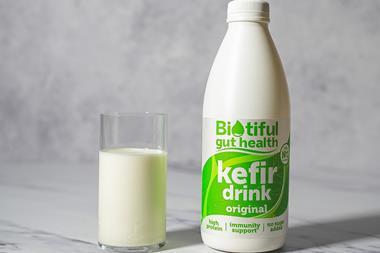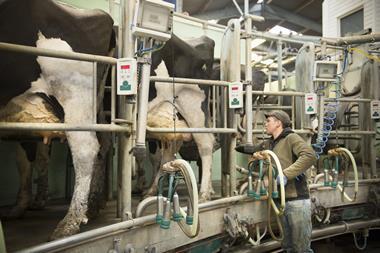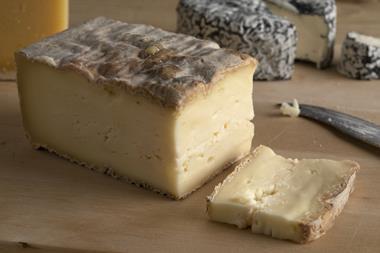The plunging price of bulk cream combined with rising fuel and plastics prices is pushing more and more businesses to the edge
It’s no secret that life in UK liquid milk is tough. Rising input costs, fierce competition for supply and supermarket price wars have put processor margins under continuing strain. But even by recent downbeat standards, the current mood is dark. Talk of a “challenging trading environment” has given way to claims of an industry “at breaking point” and engulfed in “a climate of fear”.
Already this year, two liquid milk businesses have hit the buffers - Quadra Foods, the processing arm of Dairystix maker Farmright Group, called in administrators in mid-February, followed in early March by Rock Farm Dairy.
So what’s changed? Much of the answer can be found in the global commodity markets. A dramatic fall in the price of bulk cream - an important source of income for processors - coupled with soaring prices on fuel and plastics has been putting extra strain on a sector already operating on wafer-thin margins.
According to DairyCo, the price of cream in February was £1.18/litre, nearly 25% below the 2011 average of £1.56. The Platts index - a key indicator of plastics prices - has hit £1,285/t, up from an average of £1,106.9/t in the last six months of 2011.
Experts estimate these two factors alone translate into roughly £125m in additional, annualised costs to the sector (see box left) and that’s before even taking into account the rising cost of fuel. “For dairies, fuel-related costs are now a serious cost pressure,” says Clive Black at Shore Capital. “Fuel prices are much, much firmer than everyone expected for the end of the first quarter of 2012.”
With the UK retail climate as unforgiving as ever - the price of four pints of milk remains stubbornly at £1.18 in the big four [BrandView.co.uk] - it’s little wonder the mood in processing is sombre. “We have hard-pressed consumers and a competitive retail landscape, with quite a lot of milk about,” says Dairy Crest corporate affairs director Arthur Reeves.
Unfavourable commodity movements and low retail prices affect all processors, but Dairy Crest - the UK’s sole remaining publicly listed processor - is under especially harsh scrutiny. Last November, the company said its operating margin on liquid milk was just 0.2%, and its next trading update, on 29 March, will be watched closely for indications of how the new commodity pressures are affecting margins across the sector.
Reeves is understandably tight-lipped on details ahead of 29 March but admits the company’s liquid milk operation is feeling the strain. “It’s fair to say our dairies business is under pressure,” he says.
Black says he is expecting Dairy Crest to make a “small loss” on the dairies side, but adds its broad-based business model should make it easier for the company to balance falling cream prices than for rivals Arla and Robert Wiseman Dairies.
Not that this helps Dairy Crest keep out of the limelight. “The visibility into Dairy Crest is unhelpful in times like these,” says Black. “They are very much in the spotlight.”
Who will pay?
So what can processors do to try to offset at least part of the pressure brought about by falling cream prices and rising input costs? The answer seems simple - on paper, at least. “The selling price of milk needs to go up,” says one industry executive, although he admits in the same breath that the current trading climate will make doing that extremely difficult.
The other option is to look for relief further down the value chain by cutting prices to farmers. “There’s lots of competition for supply, so we’re seeing some very frothy farmgate prices,” the executive says. “The price that dairy farmers are receiving for the milk they sell is unchanged since the turn of the year, while the value of the cream in that milk has collapsed.”
Reeves is more cautious. “Ultimately, the price we pay farmers is important, and it is one of the levers available to all processors,” he says. “But we’re doing all we can not to have to discuss farmgate prices.”
Farmers are certainly not going to take any cuts lying down. NFU chief dairy adviser Rob Newbery is quick to point out that cream prices doubled between February 2009 and November 2011, while milk prices increased by just 14%. “The notion that farmgate milk price should now suddenly react to cream value, is very frustrating for farmers,” he says.
However, processors could find it easier to broach the subject of farmgate prices if there are indications the cost of production to farmers is falling. Tesco, which models the milk price it pays to farmers in its Tesco Sustainable Dairy Group by taking into account production costs, was due to publish its new milk price as The Grocer went to press.
One industry insider suggests the retailer’s latest calculations - which are already rumoured to lead to a small drop in Tesco’s milk price - will be watched closely by the sector. “If it turns out the cost of production is falling, that would make it easier to start talking about pushing back on farmgate prices.”
None of the options open to processors will be popular, but they may not have much choice but to be tough, says the executive. “Margins in fresh milk were already perilously low in the autumn,” he says. “It is for each company to determine its strategy but for many this cost base will be hard to sustain.”
The dairy insider agrees: “Someone will have to give,” he says. Exactly who is likely to be played out in coming weeks.
Source
Julia Glotz















No comments yet